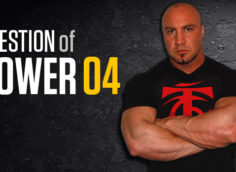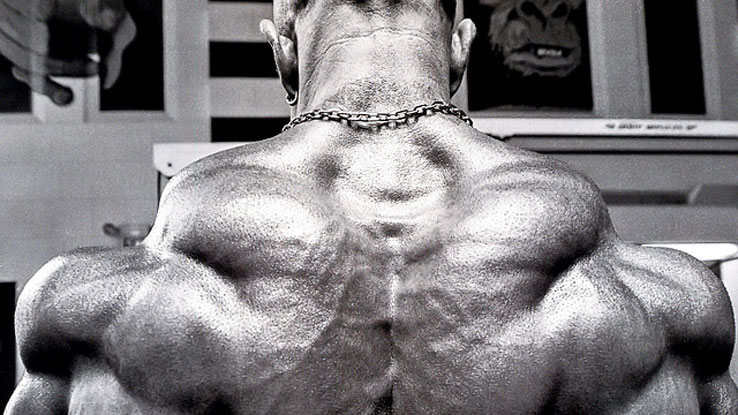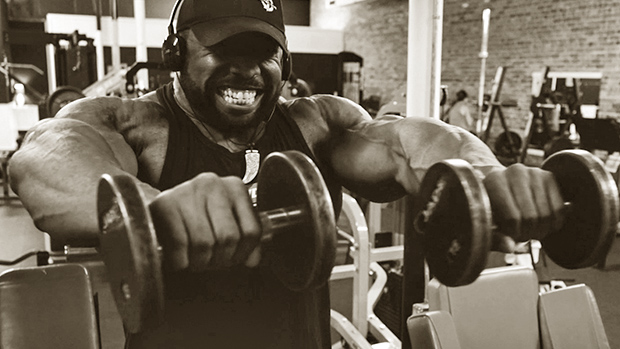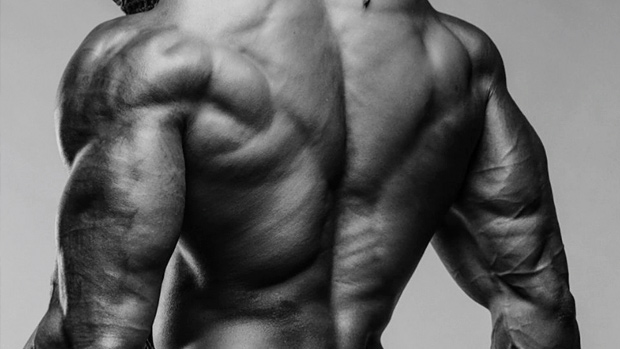Strong forearms can be built by doing the major lifts like deadlifts, rows, chin-ups, pull-ups, and carries. But building Popeye-esque forearms – the type that makes people think twice before shaking your hand – requires additional work.
Enter the wrist roller. What makes it so effective is its ability to place a laser-like focus on both the extensors (top of the forearms) and flexors (bottom of the forearms) without any relaxation time between reps.
Problem is, the standard wrist roller has some drawbacks, namely due to its minimal grip demands and excessive shoulder involvement. Fortunately, there's a better way to reap all of the roller's benefits while eliminating its shortcomings.
All you need is a barbell, a thick band, and a kettlebell:
- Set up a barbell in a rack at around shoulder height.
- Put a 45-pound plate on one end of the barbell.
- Loop a thick band through a fairly heavy kettlebell.
- Double wrap the band around the other end of the barbell.
- Alternate between extension (rolling the bar back) and flexion (rolling the bar forward) until your forearms beg for mercy.
1. It Eliminates Shoulder Fatigue
To give a standard wrist roller's rope more room to travel, most lifters hold the roller out in front of them with their arms fully extended. This gasses the shoulders out before the forearms have been fully taxed, which puts an early cap on time under tension. With the above setup, the bar is supported by the J-hooks so the forearms have nowhere to hide.
2. It Increases Grip Demands
Most standard wrist rollers are as thin as the handlebars on a Little Tikes tricycle. With this setup, grip demands are amplified since the ends of barbells are inherently thick. This throws a "crushing" element into the mix and allows you to hammer the forearms even harder.
3. Intensifies Muscular Contractions and Imposes Constant Tension
The addition of the hanging kettlebell intensifies muscular demands – its frequent oscillations force the forearms to contract continuously.
1. Greater Forearm Growth
Constant tension may be the most important factor for forearm development. While the standard wrist roller is effective, this setup ramps up muscular tension due to the hanging kettlebell and increases grip demands due to the barbell's thickness. Plus, since the shoulders aren't a limiting factor, the forearms can be pushed to their absolute limits.
2. Stronger Grip = Stronger Everything
Using the end of a barbell targets crushing strength, which has a direct carryover to strength in essentially every exercise that involves gripping a weight. This is due in large part to the law of irradiation: the harder you grip a weight, the stronger the adjacent muscles will contract.
3. More Muscle Growth Throughout the Rest of the Body
Subpar grip strength can be a major detriment to strength and size gains. A lack of control can dampen strength and weaken an otherwise strong mind-muscle connection. A strong grip, on the other hand, increases "feel" and leads to greater muscle fiber recruitment. That means greater gains in strength and muscle.
Since the wrist roller's demands are less extreme on the eccentric (lowering) portion of the exercise, there's minimal muscle damage occurring. Plus, the wrist roller places hardly any dent on the nervous system due to its small range of motion. This is good news for lifters who want to train their forearms more frequently – every day even – without robbing much training capacity.
Since time under tension is paramount for growth, setting a pre-determined amount of time for each set is key. All it takes is 2-3 sets of 60-90 seconds (alternating between flexion/extension) performed 2-3 times per week – or more, if you're up for it – to stimulate a huge muscle-building response.




